Chris Jones's Blog, page 16
July 7, 2017
Watch the 3 minute video from the Premiere of ‘Seeing Him’
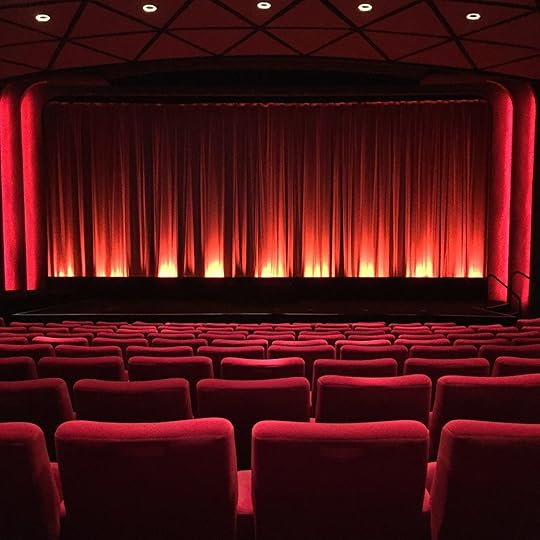
Ahead of the London Breakfast Club event today with Vanessa Bailey I thought I would share the video from the premiere of ‘Seeing Him’ last month.
It was an emotional evening, as every premiere should be, perhaps doubly so because of the journey Vanessa and her family went on to get this film to the big screen. What an accomplishment and I cannot wait to chat to Vanessa at length about it later today at the event in central London – more about that HERE.
The festival push is now underway for Seeing Him and I hope to meet you at a screening in the near future.
Onwards and upwards!
Chris Jones
My movies www.LivingSpiritGroup.com
My Facebook www.Facebook.com/ChrisJonesFilmmaker
My Twitter @LivingSpiritPix
Sign up to my mailing list for updates on events, books and free film making tools
July 4, 2017
Announcing the London Film Distribution Summit 2017 in October

[image error]
[image error]
If you are an indie filmmaker, the new Indie Distribution Summit this October has been built for you.
Priced at £69 (early bird) and crammed with speakers and sessions designed to unlock sales and distribution in 2017 and beyond, the summit is a two day gathering of indie filmmakers, working sales and distribution professionals, as well as practitioners… a gathering the like of which has never been seen before.
When: Oct 21st/22nd 2017
Where: London (venue TBC)
How much: £69 early bird / £139 full price
[image error]URL: www.filmdistributionsummit.com
We want filmmakers to fully realise the potential of their hard work in sales and distribution as it’s good for everyone.
Like you I am a filmmaker. I love imagining, writing, shooting, directing, editing, effects, sound, music…and of course the premiere.
But then… Sales and distribution. Uh oh. Very few of us get excited about this all important final step. Yet it’s this step that leads to the next bigger project.
[image error]Over the decades I have made features, Oscar shortlisted shorts as well as more innovative crowd created films. For me, sales and distribution remains the final hurdle. I don’t know about you but I MUST make a return on my films as without it, I cannot sustain and grow.
And from experience, the first question any investor in my next film will ask is, ‘tell me what happened to your other films?’ We all need a killer comeback on that question. Not only investors, but crew want to see their work ‘out there’ in a very real way too. And actors want your film to help platform their talent, which means distribution also. Everyone wants to see it succeed BIG.
[image error]That’s why I have pushed to make this event happen and keep the costs right down.
I want EVERYONE to come and share in the knowledge and experience so that collectively we can elevate our work. I want the emerging film industry of today, of which YOU and ME are already a part of, to truly flourish.
We owe it to ourselves and to everyone involved in our films – be they shorts, features or docs – to get the work out there, to monetise them, to succeed… so we can all do it again. And sales and distribution remains the final hurdle.
Join me and around 30 industry experts for a transformative, challenging, inspiring, mind blowing, energising and future looking weekend and let’s figure it out together so that everyone wins.
When: Oct 21st/22nd 2017
Where: London (venue TBC)
How much: £69 early bird / £139 full price
URL: www.filmdistributionsummit.com
Chris Jones
www.filmdistributionsummit.com
Ten Technical Mistakes That Can Ruin The Stills For Your Project

[image error]
Stills for your film or project are essential. Human beings are image driven and as the saying goes, ‘a picture speaks a thousand words’.
It’s so frustrating then that all too often I help filmmakers or see projects where fundamental errors were made when gathering photographs to support the inevitable marketing.
This is not an article about what (compositionally, aesthetically of even commercially) makes a great or appropriate image, rather simply technical issues that dog projects and people. I wrote an article here about creative choices with stills… Top 14 tips for getting KILLER stills that will help sell your film
Rather this is a list of technical issues that can cause issues later on.
[image error] Black and White
No, no, no! I can’t tell you how many times a professional photographer has sent me a black and white image and I need to go back and say can you resupply in colour please? It’s easy to convert a colour image to black and white but practically impossible to colourise a black and white image ‘back’. While we all love the aesthetic of black and white, black and white is an end usage choice and NOT a delivery choice.
[image error]Landscape please
Many images lend their framing to portrait format, but the internet is largely landscape format. Yes you may have a single image poster that is in portrait orientation, but as a rule, I would suggest ALSO getting images in landscape format too.
[image error]Low resolution / High compression
I have had producers pull images off Facebook streams assuming that they are good enough for printing. It’s OK to supply ‘social media ready images’ that are smaller and compressed but please do keep the originals safe.
[image error]Screen grabs
It is possible to use a screengrab from your film, though it can be a little hit and miss. Nothing (yet) beats a great photographer with a fast lens and an eye for an image that sells your story. If you grade professionally, you can get direct access to the film as a DPX stream which should yield very good images too.
[image error]Forgetting to archive masters
Keep your masters in an ongoing online archive – I use both Dropbox and Flickr. Here are my Flickr albums (LINK). This means my images are always available and saved to the cloud in more than one place. Only today I requested access to images taken a year ago for a project (that I got involved in later) and no-one knows where the originals have gone.
[image error]Layered artwork with text
If you get someone to do your poster artwork, make sure you get the original Photoshop or Illustrator files (layered) so the text can be edited later. Because you can bet it will be edited.
[image error]Over cropped
Resist the urge to crop and tightly frame for delivery. That can be done later but cannot be put back once it’s gone. Often times, dead space around the image may be used for text or other information to support the image.
[image error]Phone Photos
I shoot loads on my phone and use the images extensively, often retouching and grading on the phone before sharing on social media and syncing up with Dropbox (all on my phone and all remotely and instantly – very cool). Often the tool is less important than being in the right place at the right time to grab the image. The newest iPhone also has a VERY cool portrait mode that mimics shallow depth of field.
[image error]Watermarks
Many photographers will watermark their images. That’s cool so long as the Watermark does not dominate the image. It should be used to identify the photographer and not to make the image unusable.
Onwards and upwards!
Chris Jones
My movies www.LivingSpiritGroup.com
My Facebook www.Facebook.com/ChrisJonesFilmmaker
My Twitter @LivingSpiritPix
Sign up to my mailing list for updates on events, books and free film making tools
June 30, 2017
How to copy your DCP onto a memory stick for film festivals
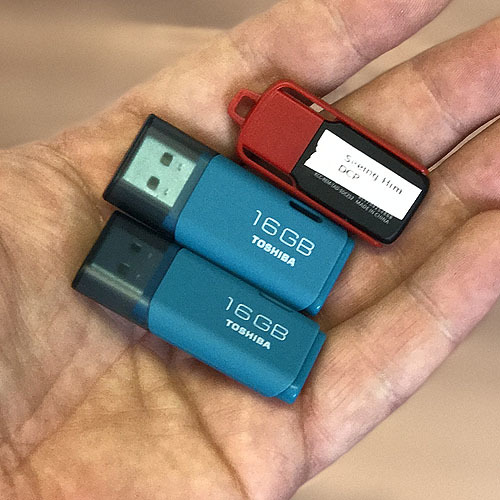
[image error]The DCP (Digital Cinema Package) has now become the standard delivery format for the biggest film festivals around the world.
Many festivals will also ask for a backup MP4 or BluRay disk too (many DCP’s fail because they were incorrectly mastered or delivered). But the DCP is the preferred format.
The DCP drive (both format and content) is quite unforgiving of even small errors. The impact is many simply fail when they get to festivals as corners were cut.
So when Cinematiq – a program that clones DCP drives – came across my in-box, I was eager to check it out in relation to the short film ‘Seeing Him’ I just directed. I know Vanessa has now submitted to over 40 festivals and those that accept it will most likely ask for a DCP.
Cinematiq allows you to clone / copy your original DCP onto new drives – memory stick drives. You can also check the content and format of the master DCP as well as verify the copy. This is enormously helpful.
[image error]It’s really not a complex tool, kind of…
Check the source drive
Check the destination drive
Check the master DCP is all good
Copy the DCP
Check the copy is perfect
… and you are good to go.
‘Seeing Him’ is a 9 minute film including credits and coming in at 9.7 GB (onto 16gb sticks), taking around an hour to copy. The master DCP was made by Soho Digital for us (you could master your own but I choose to use the experts for this final stage – and I make the DCP ‘unlocked’). For feature films we are going to be looking at 64gb memory sticks, maybe even 128gb ones.
You should also note that a DCP should be transferred to a server when presented at a festival – it won’t play off the memory stick (or shouldn’t, I don’t know if it can be done).
[image error]Cinematiq runs on a Mac only and costs $50 which is frankly money well spent.
Yes there are ways to copy DCPs without this tool, but for me, the ease with which it works and the certainty that it will work ‘festival side’ are well worth the investment.
As an indie filmmaker, I wouldn’t even consider entering the festival circuit without Cinematiq in my filmmaker toolkit.
Onwards and upwards!
Chris Jones
My movies www.LivingSpiritGroup.com
My Facebook www.Facebook.com/ChrisJonesFilmmaker
My Twitter @LivingSpiritPix
Sign up to my mailing list for updates on events, books and free film making tools
June 29, 2017
Did you know there is a new version of Avid Media Composer… And it’s TOTALLY FREE
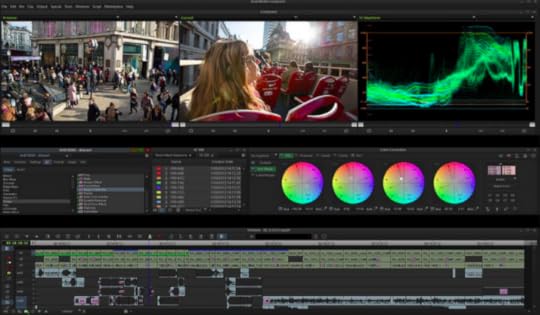
[image error]
“I can probably cut Better Call Saul on this… and it’s free, wow!”
Kelley Dixon, ACE, editor Better Call Saul, Breaking Bad
I am a long term user of Avid and they have just released a new version of Media Composer that is free to download and use – Media Composer | First.
Many years ago I consulted with Avid about engaging new filmmakers and I suggested a fully functional and free version was the way to go. They didn’t go with the idea then and Apple pretty much had their lunch (before Apple self imploded with Final Cut Pro X). Since then Apple has regained ground lost, and Adobe and others (such as Lightworks and Davinci Resolve) have filled the astonishing void that was still left by Avid.
So I am personally excited to see what Media Composer | First can deliver. And whether it’s a truly credible tool for cash strapped indie filmmakers.
You can download it now from their site HERE.
Thanks to my editor buddy Simon Reglar for sharing the link.
I am sure there will be some limitations, but for now, I am going to download and try it out – please do share your experiences below.
Onwards and upwards!
Chris Jones
My movies www.LivingSpiritGroup.com
My Facebook www.Facebook.com/ChrisJonesFilmmaker
My Twitter @LivingSpiritPix
Sign up to my mailing list for updates on events, books and free film making tools
June 22, 2017
Top Ten Things I Learned From My Last Film… And the REAL driving force behind it

Last weekend we premiered the latest film I directed, a hard hitting drama about forbidden love called ‘Seeing Him’.
Starring, produced by and written by Vanessa Bailey, it’s been several years in the making, with reboots, re-envisioning, recasting… and with at least four directors at the helm!
Why so long? Why so many incarnations?
Put simply, this film was for Vanessa, her education, her baptism of fire and her ‘first born’ movie.
If ever there was a tale of tenacity and NEVER giving up, this is it.
[image error]
So looking back, what can we learn from this film and Vanessa’s journey?
[image error]Surround yourself with talent
Unlike many other filmmakers, Vanessa only worked with people with more experience than herself – cast and crew. Letting go of needing to be the biggest fish in the pond means you get access to much greater experience, talent… and invariably (at the needed moment) their contacts, who are also working at higher levels. This elevates the film and the focus of everyone involved. Reduce your ego and hire upward.
[image error]Don’t fear tough choices
The first shoot of this film just didn’t work and it became apparent that it would be better to restart than to try and fix. This meant letting go of a huge amount of work and relationships. This was a hugely painful choice that I saw Vanessa make. But the right one. Others would have buckled, completed it and let it out on Youtube with a shrug. Vanessa simply said ‘No, it’s not good enough, let’s start again’. Or ‘it’s not happening, we need to change direction’. That’s why she actually fired me at one point! Though I was resurrected again to complete the film (all done in the nicest possible way too). Make the tough choices for the film.
[image error]Casting, casting, casting
Being an actress (who changed career from teaching at 35 – so it’s never too late) and now a successful one too, Vanessa was always going to cast upward. George Taylor who plays the male lead opposite her is very much in the ascension, and when you see the film, you will see why. Again lesser filmmakers might have cast from their friendship group. Not Vanessa. She weedled her way in via Twitter, managed to get a coffee date, then wrote the part SPECIFICALLY for the actors she wanted. It’s ALL about the casting.
Behind the scenes of the reshoot
[image error]Respect the filmmakers
While there was a HUGE amount of ‘actor’ talk and writing going on, Vanessa was (eventually) sure enoughin herself to allow me, a filmmaker, to hone the structure and execution. This was achieved in a final one day pick-up / reshoot day. I could see that Vanessa didn’t always understand what I was pushing for, but she trusted I understood that mechanics of the story, and so gave me freedom – writing new scenes for me as a director (like she did with the cast). While it’s ALL about the casting, it’s ALL about the filmmaking too.
[image error]Crewing, crewing, crewing
Hiring an experienced DP with credentials (James Layton) meant that others became attracted to the film too. This elevated everything. Hire upward and your ALL your crew will be more experienced.
[image error]Rewrite, rewrite, rewrite
Vanessa could write at an Olympic sports level. Not always the best writing, not always the right writing. And sometimes spot on. BUT… the words were always there and ready to be reworked in the morning. This was a phenomenal strength and allowed for constant evolution and refinement. Never mind first draft, Vanessa passed 100th draft! Respect.
[image error]Become a stalker
To get me involved Vanessa stalked me on Twitter. I later found out that she did this for a great many people. She would make a connection via Twitter and then solidify that in the real world by meeting at an event or for coffee. She would always promote my stuff BEFORE the real world relationship and so in effect, ‘paid it forward’ and created a favour bank in advance. A small favour bank mind, but enough to create interest and traction from those she had her eye on. Vanessa is very good at selling herself, her projects and the work of others that she tactically or emotionally wants to support. This sets her aside from an ocean of people who just want others to market them by retweeting and sharing with NOTHING offered in advance. Behave like a marketer and GIVE first.
Recording the music
[image error]Vision
Vanessa knew what she didn’t want even if she found it hard to explain what she did want, especially in the early days. It could be frustrating at times but she had set such a high standard for herself – and crucially and achievable standard – that her vision was more driven by aspiration than specific story and plot. The music was a good example of this – hiring an award winning composer and recorinding a live score with musicians. This could only work of course with flexibility, trial and error and a relentless desire to work at the highest possible levels. And working with the right team. Aim high.
[image error]Don’t give up till you find the hook
It took a very long time to find the hook for this film, the heart, that single thing that we knew would make people lean forward when watching. Until that point, the project was very good, just not outstanding. Keep working on the idea until you find that essential factor.
[image error]Crowdfund with fun, engagement, passion and total commitment
Vanessa has become an expert crowdfunder through the five campaigns she has run. All throughout she has carried her backers through the ups and downs and remained in contact and accessible. She has maintained high social media visibility too. Her tone is always fun and engaging, a little self deprecating and also aspirational. Put simply, people just like Vanessa and what she is doing, so they continue to support her. Something Simon Cox does well too on Kaleidoscope Man. Connect and keep the relationship alive.
[image error]Killer Premiere
I have always said that a film premiere is a rite of passage for everyone involved and this film was no different. We hosted a stunning event at the Prince Charles in Leicester Square and everyone in the core team and family will remember it for the rest of their lives. Hosting a killer premiere elevates you, your film, your team and perhaps most importantly, creates a magic moment of acknowledgment and reflection that you will never forget. Host the unforgettable premiere.
The next London Breakfast Club is with Vanessa and is ideal for writers and actors who want to take charge of their work and career but are a little reluctant to dive into the production pool. Come along, you will be inspired and informed in equal measure. More HERE.
Onwards and upwards!
Chris Jones
My movies www.LivingSpiritGroup.com
My Facebook www.Facebook.com/ChrisJonesFilmmaker
My Twitter @LivingSpiritPix
Sign up to my mailing list for updates on events, books and free film making tools
The Twisted50 Shortlist will be announced… Support the Thunderclap!
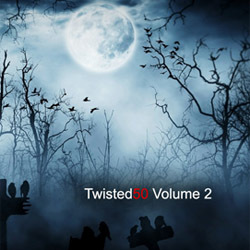
[image error]
Can you join our Social Media Thunderclap to announce the Shortlist for Twisted50 volume 2?
You can join it HERE and will take just 30 seconds. Twisted50 is part of Create50, the London Screenwriters’ Festival initiative to platform new talent.
The shortlist and link will go live at 11am in July 4th
Once announced we will be selecting the finalists and judging them for the Awards. Right now we are also working on the concept that we will bring Twisted50 volume three out of the shortlist.
This is a reflection of the excellent work submitted.
Twisted50 Volume 2 brings 50 new terrifying voices in horror to a bookstore near you. Forged out the Create50 process, and following up the hugely successful Twisted50 volume 1, you can bet this second volume will push deeper into our collective darkest of fears.
Thank you for supporting!
Here’s the link again…
https://www.thunderclap.it/projects/58795-twisted50-vol-2-shortlist
Chris Jones
www.Twisted50.com
June 13, 2017
Ken Loach, top 13 quotes for filmmakers and screenwriters
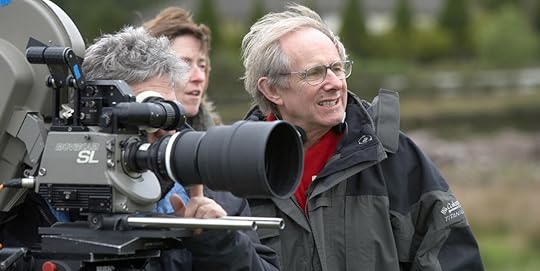
[image error]
Ken Loach is one of our most prolific and uncompromising filmmakers here in the UK. With decades of ground-breaking work under his belt and an astonishing track record, we are delighted to host an ‘In conversation’ with him at the London Screenwriters’ Festival tomorrow night. You can get your pass HERE.
And here are his top thirteen quotes. See you THERE.
‘We not only shot on film, we cut on film…so you consider what you do more carefully. It’s a much more human way of working.’
‘What I’ve always tried to do is just to capture the truth of the moment.’
‘One thing we’ve learned over the years is that you don’t follow the headlines…Otherwise, you’ll be out of date by the time the film is made.’
‘It begins with a script and the research and being accurate but also allowing space for all human idiosyncrasies. Because you can be dead accurate and dead. It has to be full of life and quirks and funny things.’
‘It was fast, which I think is the best way to shoot, you keep the momentum going.’
‘I think valuing people’s contributions is key… I work with brilliant people, and take any one of them away and we couldn’t do it.‘
‘You shoot too many scenes that you don’t need. I think that’s one of the biggest mistakes that people could make. And I made that, sometimes at the outset.‘
‘We try to cut the budget before we start. We cut the script so that you demand less.’
‘That’s always what you’re looking for, finding a small story, or a relationship, or a situation, and if you tell that truthfully, you say something about the much bigger picture without actually having to have say it.’
‘If you’re a director, remember you’re not a writer. And if you’re a writer, you’re probably not a director. Remember the distinction.’
‘Keeping self-belief is the biggest challenge. In the end, if you don’t get it right, you don’t get it right, but you’ll still be there tomorrow to learn your lesson.’
‘Don’t take advice. You have to make up your own mind what to do from the beginning. Don’t follow the industry ritual. Follow your own voice.’
‘The duty of a film director is to focus more on the soul of the spectator.’
Onwards and upwards!
Chris Jones
My movies www.LivingSpiritGroup.com
My Facebook www.Facebook.com/ChrisJonesFilmmaker
My Twitter @LivingSpiritPix
Sign up to my mailing list for updates on events, books and free film making tools
June 6, 2017
5 Steps to Creating a Compelling Antagonist for Your Film… Meet the Nolan incarnation of The Joker

By Emma Hallewell
Two important characters in every film are the protagonist and their antagonist, so I’m always looking for ways to create more interesting and compelling antagonists in my writing.
One of my favourite antagonists is Heath Ledger’s The Joker (The Dark Knight, 2008), and I stumbled onto a great video by Lessons from the Screenplay that explains why this character is so successful with audiences. Watch the video yourself. It’s worth it. Here’s what I got from it.
Competing for the same g[image error]oal as the protagonist
Although it may seem strange to consider the antagonist and protagonist having the same goal, their goals within this shared desire can be entirely opposing. This is shown in The Dark Knight as the Joker and Batman are both competing ‘for the soul of Gotham’. It is equally important to the Joker that Gotham City descends into anarchy and chaos as it is to Batman that the city is hopeful and has law and order. By creating an antagonist and protagonist who are competing for the same goal, it automatically creates a narrative where they are forced to continually cross paths and enter into a conflict.
[image error]Stakes are personal, first and foremost
I have watched a number of films where the ultimate goal of the antagonist is to destroy the planet, and, as the video explains, the audience are usually reasonably sure that the villain will fail because of this. In The Dark Knight, the stakes are less high as only ‘Gotham’s soul’ and a relatively small number of lives are at stake; however, this arguably makes the film more interesting because it becomes plausible at every stage that Batman will lose.
[image error]Exceptionally good at attacking the hero’s greatest weakness
One of the factors that makes the Joker ‘the ultimate antagonist’ is his obvious and deep understanding of The Batman (the film’s protagonist), and how he tailors his attacks to target Batman’s weaknesses. Batman’s strength is his physical power, and therefore the Joker conspires to turn this into his biggest weakness through making scenarios where this power is nullified. Batman also refuses to kill and the only way to truly stop the Joker is for Batman to break this moral code, creating an interesting dilemma in the protagonist’s character arc.
[image error] Pressuring the protagonist into difficult choices
The Joker pushes Batman to his personal limits, as he threatens him with further murders if he doesn’t surrender and reveal his true identity. The Joker works to force Batman to reveal his true character – not only who is under the mask, but what he is and isn’t willing to endure, and the sacrifices he is willing to make for Gotham. He is forced to accept that he is not willing to sacrifice Rachel and this conflicts with the moral duty he feels towards Gotham City.
[image error]The protagonist should be affected by the antagonist
Batman at the film’s conclusion is not the same character as he is at the beginning, due to the impact of the Joker’s actions and their relationship. He ends the film as the ‘Dark Knight’ and this is the direct result of the pressures and challenges forced on him by the antagonist. A compelling and interesting antagonist should affect the protagonist’s character arc in a noticeable way.
Overall, the main thing I learned from watching this video is that although the Joker is undeniably a compelling and interesting antagonist, a large part of that greatness is directly due to how his character relates to Batman’s. ‘They are two sides of the same coin’, and the pressures and attacks he forces on Batman are incredibly tailored to his opponent’s weaknesses as he completely understands him.
I also realised that the Joker would arguably not be as compelling a character if he was placed opposite a character with a different goal than he has, or with a different moral compass as part of his success hinges on the fact that Batman refuses to kill him.
I have learned that a great antagonist must not only be an interesting character in their own right, but they must also be fundamentally tailored to the protagonist of the film and I will take this lesson forward into my writing.
May 20, 2017
Rewrites, Reshoots, ADR and Pickups, top ten tips to get the most from your resources

During post production on any film, there will be a point where your start to consider reshoots and pickups.
As a film is edited, problems will start to appear…
These are story problems that were not fixed in the script, issues that arise out of production problems (running out of time or light during the main shoot for instance), casting challenges (actors turning out to be different than expected, chemistry lacking etc), even the editing process introduces continuity issues… etc etc…
All of these and many more ‘snags’ will lead you to the notion that you need to shoot some more stuff.
We did this last year with the short film ‘Seeing Him’ which premieres next month (and you can get tickets here).
When I saw the edit of the film it was apparent that some reshoots, pickups and ADR was needed to clarify the central premise and theme of the film.
This is VERY common and happens on most films.
So what are picksups, reshoots and ADR specifically?
Pickup – a shot or shots needed to make a scene work better, often an establishing shot of a story location, a close up of a ‘hero’ prop that clarifies story, a shot of the newspaper headline etc. (many of these kind of shots get dropped during the main shoot for purely logistical reasons).
Reshoot – A scene just isn’t working, so it is rewritten and reshot, often reducing the length and clarifying some missing story mechanics. Or a whole new scene is created to help the story.
ADR – New dialogue is recorded to fix badly recorded dialogue or new dialogue to add story information (the later often playing off shot so you don’t see the actor speak but you do hear the words).
Prior to reshoots and pickups you will add title cards to your edit explaining what the missing shot or scene will be. This will help viewers understand the mechanics of your story, even if there are bits still missing.
Here are my top tips for making sure you get what you need from your reshoots and pickups.
[image error]Plan for a long weekend
Rental rates, location access, crew availability, cast availability… All seem to be better over a weekend. So plan for a long weekend, picking up kit on a Friday and dropping off on a Monday.
[image error]Don’t fall out with your team
Especially your cast. I have seen too many films and filmamkers suffer over the years because rifts developed while in the crucible of the shoot. So give up your need to be ‘right’, eat some humble pie and make up with the cast and crew with whom you may have fallen out. Better still, don’t fall out in the first place. Make friends and stay friends. You will most likely need them back.
[image error]Wait until the edit REALLY screams for your reshoots and pickups before organising one
Once a problem has been found in the edit, the instinct is to fix it. And we filmmakers can be an impatient lot. Now is the time to slow down and reflect and not do what you needed to do on set – run at 100mph – and see how the edit evolves. Reshoots (rewrites really) will evolve over the duration of the edit and you don’t want to shoot it before you are ready. As ever the first draft is not the one to shoot. You also want to be sure you get everything in that one reshoot weekend so the later you do it, the more you will cover.
[image error]Embrace the reshoot
Too many filmmakers fear reshoots and pickups. In my experience a well thought out and organised reshoot weekend will transform your film. And if it’s well run, it should not cost very much. You will be amazed how much ground you can cover with a smaller crew, ultra focus and a fully rested mind and body.
[image error]But if you need another reshoot after the last reshoot…
Do it. On one feature film I made we had five reshoots, including reshooting the end three times. We got it right that fourth time (including the original shoot). Micro budget filmmaking can be organic and evolutionary and it’s best to embrace this as a philosophy. Get it right as you will only ever have one premiere.
[image error]Shoot with as small a crew as possible
In my experience, on pickups and reshoots I have acted as a quasi art-department and costume department. Add to this a producer to fix issues, a DP who will also do the DIT and focus pulling (though there is a good arguement for one more camera team member), a sound recordist and a couple of extra eager hands and you have a crew. Lighting should be minimal. Depending on complexity, you may also need makeup and costume onboard too. The bigger the crew the slower you will move. Usually, we base ourselves out of a single location where all props and costumes (and even micro sets can be built) are stored. Shooting on the long end of the lens to blur out and compress background detail (and thus hide) the background can mean you don’t need to keep changing locations too. It’s all about getting the needed shots with the least crew relocation as possible.
[image error]Have the film to hand
Get the most recent cut of your film on a laptop or iPad so you can refer to it during the reshoot. Most likely you won’t refer to it too much but when you need it, it will be invaluable.
[image error] Be clever with shots and locations
One physical location can serve as many story locations, especially for reshoots and pickups. What you are looking for most is minimising moving the crew.
[image error]Props
Often on a microbudget shoot, some props, especially in close up shots, will betray their budget. I have routinely reshot close ups of ‘hero props’ having taken time to get the prop looking amazing and with the appropriate detail when up close and personal (the most common now being a mobile phone screen). One crap prop will bounce an audience out of your story, so pick-up and reshoot those close ups that just don’t meet the standards.
[image error]Plan plan plan
The joy of a pickup / reshoot is the ability to take your time to plan it well, without exhaustion and the out-of-control feeling a long feature film shoot often presents. So plan plan plan.
Onwards and upwards!
Chris Jones
My movies www.LivingSpiritGroup.com
My Facebook www.Facebook.com/ChrisJonesFilmmaker
My Twitter @LivingSpiritPix
Sign up to my mailing list for updates on events, books and free film making tools



